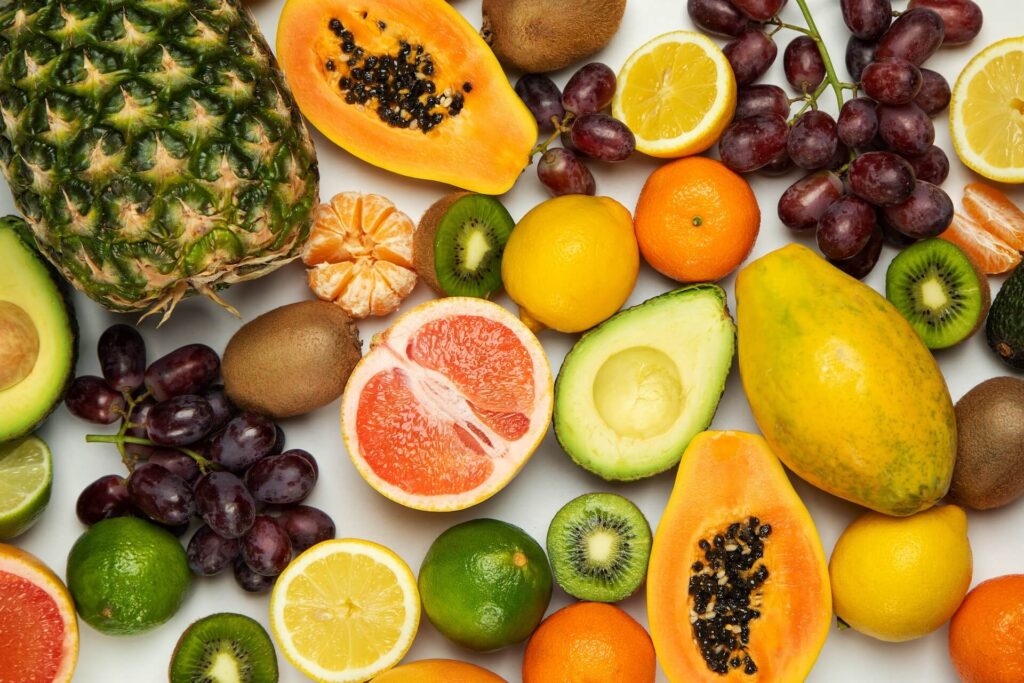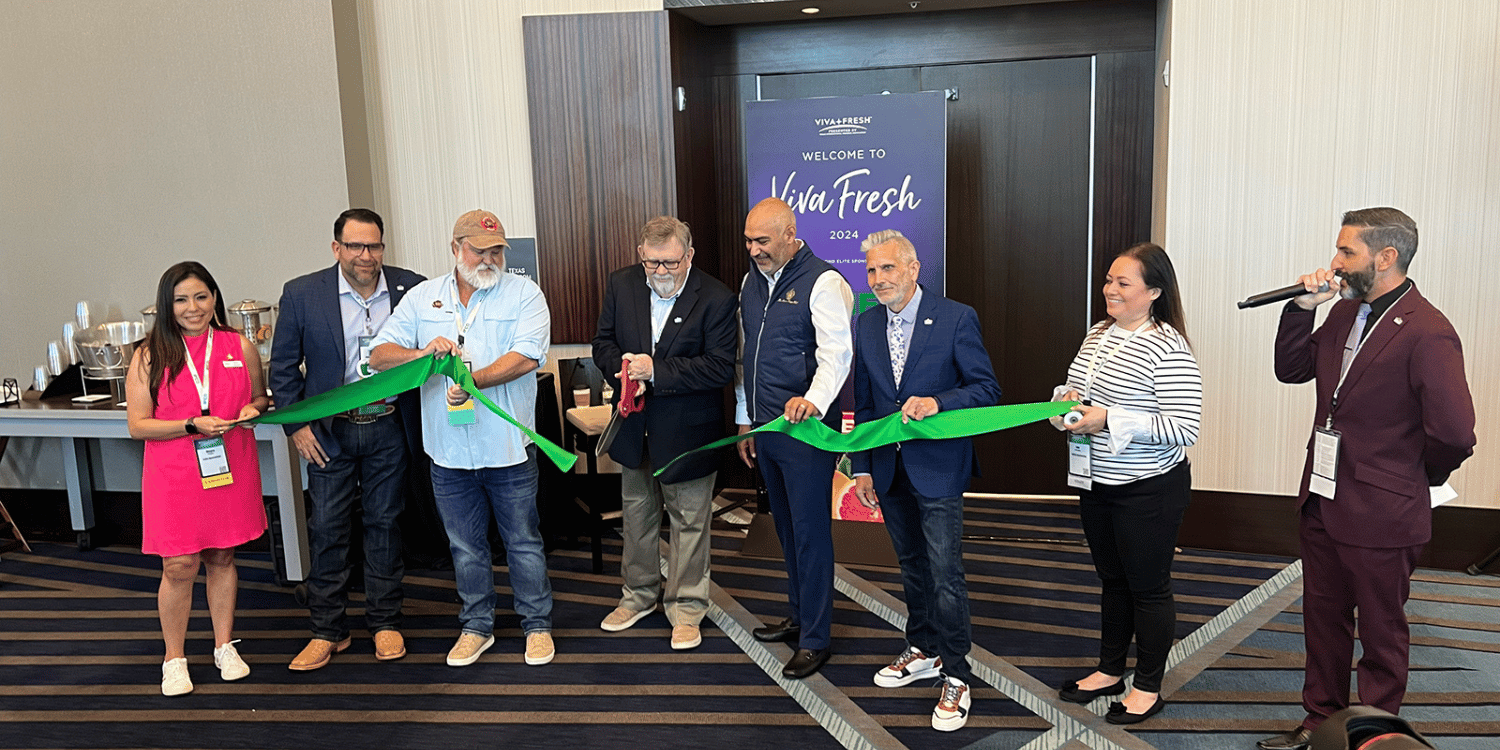The world of produce consumption is rapidly changing.
An increasing number of consumers are seeking products that offer ease and convenience, mirroring the fast-paced nature of modern lifestyles.
Pre-cut and ready-to-eat produce options are increasingly gaining in popularity, meeting the demand for both time-efficiency and health-conscious choices.
This movement is reshaping not only consumer behavior but also the broader produce industry.
Through examining this evolving trend, we can gain deeper insights into contemporary consumption patterns.
Let’s delve deeper into this phenomenon that is fundamentally altering the way we perceive and consume fresh produce.
Contents
The Shift Towards Convenience: Pre-cut And Ready-to-eat Produce
The shift towards convenience has led to increasing popularity of pre-cut and ready-to-eat produce in the market due to busy lifestyles and demand for easy meal preparation. This change reflects consumers’ willingness to pay for the added value of convenience, despite higher costs compared to traditional produce. The trend has also influenced suppliers and retailers to invest more in innovative packaging and preservation technologies to maintain freshness and extend shelf life.
While the rising demand for pre-cut and packaged fruits and vegetables plays a significant role in today’s market, this dynamic is only one facet of a larger shift in consumer behavior.
Encompassing changing dietary preferences, health consciousness, sustainability concerns, and technological advancements, these broader trends provide a wider scope to understand and anticipate the future of the food industry.
As we delve deeper into this multifaceted transition, we will also explore the context of evolving consumer habits, the resultant challenges and opportunities for retailers, and the growing influence of technology in food management and distribution.
Why has this shift occurred?
There are several reasons why we’ve seen this shift toward pre-cut and ready-to-eat produce.
Firstly, there is a growing focus on health and wellness, and more people are realizing the benefits of incorporating more fruits and vegetables into their diet.
However, with today’s busy lifestyles, many people do not have the time or knowledge to prepare and cook these foods from their raw, whole state.
As such, pre-cut and ready-to-eat produce offer a convenient solution, enabling healthier eating without the time-consuming preparatory work.
Pre-cut products are extremely convenient for consumers, requiring minimal to no preparation.
As such, pre-cut and ready-to-eat produce offer a convenient solution, enabling healthier eating without the time-consuming preparatory work.
This is a noteworthy point because it emphasizes the central advantage of pre-cut and ready-to-eat produce.
These products not only offer a healthier alternative to processed or fast foods, but they also remove barriers to healthy eating by reducing preparation time and effort.
The role of technology and innovation
Another factor contributing to the rise of pre-cut and ready-to-eat produce is the advancement in preservation and packaging technology.
In the past, pre-cut fruits and vegetables would quickly oxidize and spoil, making them unattractive to consumers.
However, advancements in packaging and preservation techniques have dramatically improved the shelf life and freshness of these products, making them a viable option for consumers and retailers.
Innovations such as modified atmosphere packaging (MAP) have played a pivotal role in this shift.
MAP technology works by modifying the internal atmosphere of the packaging to slow down the natural deterioration process of the produce, thereby extending its shelf life.
Impact on the broader produce industry
The rise of pre-cut and ready-to-eat produce has not only changed the shopping experience for consumers but has also impacted the broader industry in several ways.
For instance, it has influenced farming practices, with farmers now growing specific crop varieties that are more suitable for pre-cut packaging.
It has also brought about new investment opportunities in packaging and preservation technology as the demand continues to grow.
The trend has also created a need for additional food safety measures as pre-cut produce, being more exposed to contamination, requires stringent safety protocols.
Despite these changes and challenges, the prospect of continued growth in the pre-cut and ready-to-eat produce market persists – a sign that the industry is adapting well to these changes.
The Evolution and Impact on the Broader Produce Industry
The shift towards pre-cut and ready-to-eat produce has aided in the substantial alteration of the produce industry.
Historically, the industry was heavily reliant on the trade of whole fruits and vegetables which consumers would then need to prepare at home.
However, the entrance of these convenient, ready-to-consume products has transformed the market dynamics, pushing for an increased focus on efficiency, packaging innovation, and quality control.
This major shift has necessitated a complete restructuring of production and distribution methodologies, with pre-cut and ready-to-eat produce bringing a new wave of prospects to the industry.
The change has also forced producers and vendors to adapt or risk being left behind, underlining the significant impact of this evolution on the broader produce industry.
The entrance of pre-cut and ready-to-eat products has transformed the market dynamics, pushing for an increased focus on efficiency, packaging innovation, and quality control.
This transformation is due to the rapidly changing consumer preference for convenience and efficiency over traditional grocery shopping and food preparation methods.
The paradigm alteration has been particularly evident in the dynamics of supply and demand in the produce market.
Impact on the Wider Produce Market
Notably, the wider market has been adjusting to the rising demand for pre-cut and ready-to-eat produce, witnessing significant changes in terms of production, competition, and pricing.
Producers are now required to consider additional factors such as shelf-life, packaging, and distribution logistics, which were less crucial in dealing with whole produce.
Furthermore, competition has intensified, as businesses seek to introduce unique and diverse pre-cut produce offerings to attract a greater customer base.
Pricing too has been affected, as consumers are now willing to spend a little more for the added convenience of these ready-to-eat products.
These resultant changes have had a profound influence on market structure and economic dynamics, highlighting the far-reaching impact of the rise of pre-cut produce.
Producers are now required to consider additional factors such as shelf-life, packaging, and distribution logistics, which were less crucial in dealing with whole produce.
These changes have necessitated novel strategies and business models in order to keep up with the demanding consumer landscape.
However, despite the challenges, the evolution of the produce industry centered around pre-cut and ready-to-eat products signals a significant growth opportunity for businesses adept at meeting changing consumer needs.
Process of Preparing Pre-Cut and Ready-to-Eat Produce
The process of preparing pre-cut and ready-to-eat produce involves several defined stages to ensure that the finished products are of high quality, properly sterilized and presented in a manner that appeals to the consumer.
Firstly, the fresh produce is thoroughly inspected and sorted to remove any defective or damaged items that can potentially degrade the quality of the end product.
The sorting process not only takes into account the physical appearance of the produce but also its firmness and ripeness.
Only the high-quality, ripe and firm items make it through this stage to be washed and prepared for cutting.
Post-Sorting Washing and Cutting
Next, the sorted items are washed in a special machine that is designed to remove any residual dirt and harmful microbes.
The washing process is not only integral for cleaning but also for maintaining the overall quality and taste of the produce, since soil, debris and microorganisms can affect both.
The pre-cut and ready-to-eat produce is then cut into uniform pieces preserving the natural texture and color of the fruit or vegetable.
The cut process must be done swiftly to avoid oxidation, which could lead to browning or spoilage of the produce.
Additionally, each item must be cut in a way that maintains the overall natural texture and color of the fruit or vegetable.
Attention to detail and rapid execution is key in this stage as it impacts the quality, aesthetics, and freshness of the end product.
Blanching, Cooling, and Packaging
Depending on the variety of produce processed, it may undergo blanching—a quick heat treatment in the boiling water or steam—to inactivate the enzymes which could cause undesirable changes in flavor, color, and texture during storage.
After this, the product is quickly cooled to stop any further cooking and maintain freshness.
Once cooled, the cut produce is packed.
The packaging step plays a vital role in preserving the freshness, texture, color, and flavor of the pre-cut and ready-to-eat produce.
Specific packaging technologies are used to extend the shelf-life and maintain the quality of the produce.
Preservation and Distribution
Finally, the packaged items are preserved in a controlled environment, often a chilled storage room, to maintain their freshness until they reach the consumers.
The temperature during this stage is carefully monitored as it directly affects the shelf life of the items.
Then the products are distributed to the retailers.
The whole process, from cutting to distribution, is tightly controlled to ensure that the pre-cut and ready-to-eat produce delivered to the customers is fresh, appealing and safe to eat.
As we can see, the process of preparing pre-cut and ready-to-eat produce is quite complex, every step is meticulously planned and executed, all with an aim of providing consumers with a convenient, healthy, and safe food option.
How Are Freshness and Shelf Life Maintained?
Understanding the science of maintaining freshness and extending shelf life in pre-cut produce is crucial in this industry.
Several techniques and technologies have been developed to ensure the freshness, quality, and safety of the products right from the point of cutting up to the time of consumption.
Role of Refrigeration
The most primary and fundamental method of maintaining freshness in pre-cut fruits and vegetables is through refrigeration.
Applying a cold temperature slows down the degradation process of the produce induced by enzymes and microorganisms, thereby helping retain the vital nutrients and freshness for a more extended period.
It is noteworthy that different types of produce require different storage temperatures for their optimal storage.
Having an understanding of these intricate details is incredibly essential when dealing with pre-cut produce.
The most primary and fundamental method of maintaining freshness in pre-cut fruits and vegetables is through refrigeration.
Supporting this, research has shown that maintaining the right temperature for each type of produce significantly increases their shelf life.
Additionally, refrigeration also prevents the growth of pathogens, ensuring the safety of the pre-cut produce.
Modified Atmosphere Packaging (MAP)
Another crucial technology in preserving freshness and prolonging the shelf life of pre-cut produce is Modified Atmosphere Packaging (MAP).
This technique involves adjusting the atmosphere within the packaging by balancing the levels of oxygen, carbon dioxide, and nitrogen.
The balance of these gases depends on the type of produce, as different produce respond differently to varying levels of these gases.
MAP works by slowing down the respiration and ripening process while inhibiting the growth of pathogens, hence maintaining the freshness and extending the shelf life.
Another crucial technology in preserving freshness and prolonging the shelf life of pre-cut produce is Modified Atmosphere Packaging (MAP).
Studies show that packaging in a modified atmosphere not only preserves the freshness and extends the shelf life of pre-cut produce, but also helps maintain the nutritional value of these produce.
Therefore, it is an effective technique in the pre-cut produce industry.
Use of Preservatives
Finally, certain preservatives are often used in the pre-cut produce industry to increase shelf-life and maintain freshness.
These preservatives, such as citric acid and ascorbic acid, are often used on cut surfaces to prevent browning and maintain the appearance of freshness.
However, the use of preservatives is a topic of debate, as some consumers prefer products without added preservatives due to health concerns.
Therefore, it is crucial that any preservatives used are safe, approved, and properly declared on the product packaging.
These preservatives, such as citric acid and ascorbic acid, are often used on cut surfaces to prevent browning and maintain the appearance of freshness.
It’s important to note that while these techniques and technologies are vital in maintaining freshness and extending the shelf life of pre-cut produce, the primary determinant of quality is the freshness of the raw materials.
Therefore, procuring fresh and high-quality raw produce is paramount in the pre-cut produce industry.
Traditional vs. Pre-Cut Produce
The availability and convenience of pre-cut and ready-to-eat produce have greatly influenced consumer behavior, causing a clear distinction between traditional and pre-cut produce.
One of the major differences between these two types of produce is in preparation time and processing.
Preparation Time
Traditional produce requires time for cleaning, peeling, cutting, and sometimes for deseeding, which can be time-consuming.
However, pre-cut and ready-to-eat produce is handy and quick to consume as all these steps are already done before the product reaches the customer.
Thus, pre-cut produce acts as a significant time-saver compared to traditional produce.
This aspect is critical in today’s fast-paced world, where time is a valuable resource.
People are willing to pay a higher price for the convenience of ready-to-use produce.
Processing
Pre-cut produce undergoes a certain degree of processing before it is offered to consumers.
The produce is washed, cut, utilized into salads, or packed individually for optimal convenience.
These processes are not involved when it comes to traditional produce.
Traditional produce is sold in a natural and whole state, much like how it is harvested from the farm.
Customers have to carry out the washing, peeling, and cutting activities themselves, which can be painstaking compared to pre-cut produce.
Nutritional Value
When it comes to the nutritional value of traditional produce and pre-cut produce, there’s been a lot of debate.
Some believe that pre-cut produce loses its nutritional value due to the exposure it gets after being cut.
However, others insist that the nutritional loss, if any, is negligible.
This conclusion was reached after various research studies found that there’s no significant nutritional difference between pre-cut and traditional produce.
Despite the differences, both traditional and pre-cut produce do have their own sets of advantages and cater to customers’ varying needs.
The final decision largely boils down to individual preferences, based on factors like convenience, flavor, nutrition, and price.
When discussing the advantages of choosing convenience produce, it is impossible to ignore the obvious benefit: ease of use.
Pre-cut and ready-to-eat produce are revelations for those leading busy, time-crunched lives, as they eliminate the time and effort required for washing, peeling, and chopping.
Moreover, these products are perfect for people with limited culinary skills or those who simply dislike the preparation part of cooking.
Pre-cut and ready-to-eat produce are revelations for those leading busy, time-crunched lives, as they eliminate the time and effort required for washing, peeling, and chopping.
This factor alone has led to a surge in demand, as more and more consumers prefer to spend their time on other activities, rather than on cumbersome kitchen work.
In addition, pre-cut fruits and vegetables also offer portion control and prevent food wastage, as consumers can choose to buy only the quantity they require
Final Thoughts
The rise of pre-cut and ready-to-eat produce is dramatically reshaping the produce industry, driven predominantly by changing consumer preferences for convenience and ease.
The processes involved in maintaining freshness and extending shelf life, as well as the innovative packaging solutions being adopted, are proving seminal in facilitating this shift.
Despite some perceived drawbacks, the benefits offered by these convenient product types – in terms of time, ease, and accessibility – appear to significantly outweigh the negatives.
Incorporating these insights, it is clear to see that the industry is likely to further gravitate towards offering more convenience-focused produce options.
As technological advancements and consumer preferences continue to evolve, the market for pre-cut and ready-to-eat products is set to grow even more robust in the future.




















